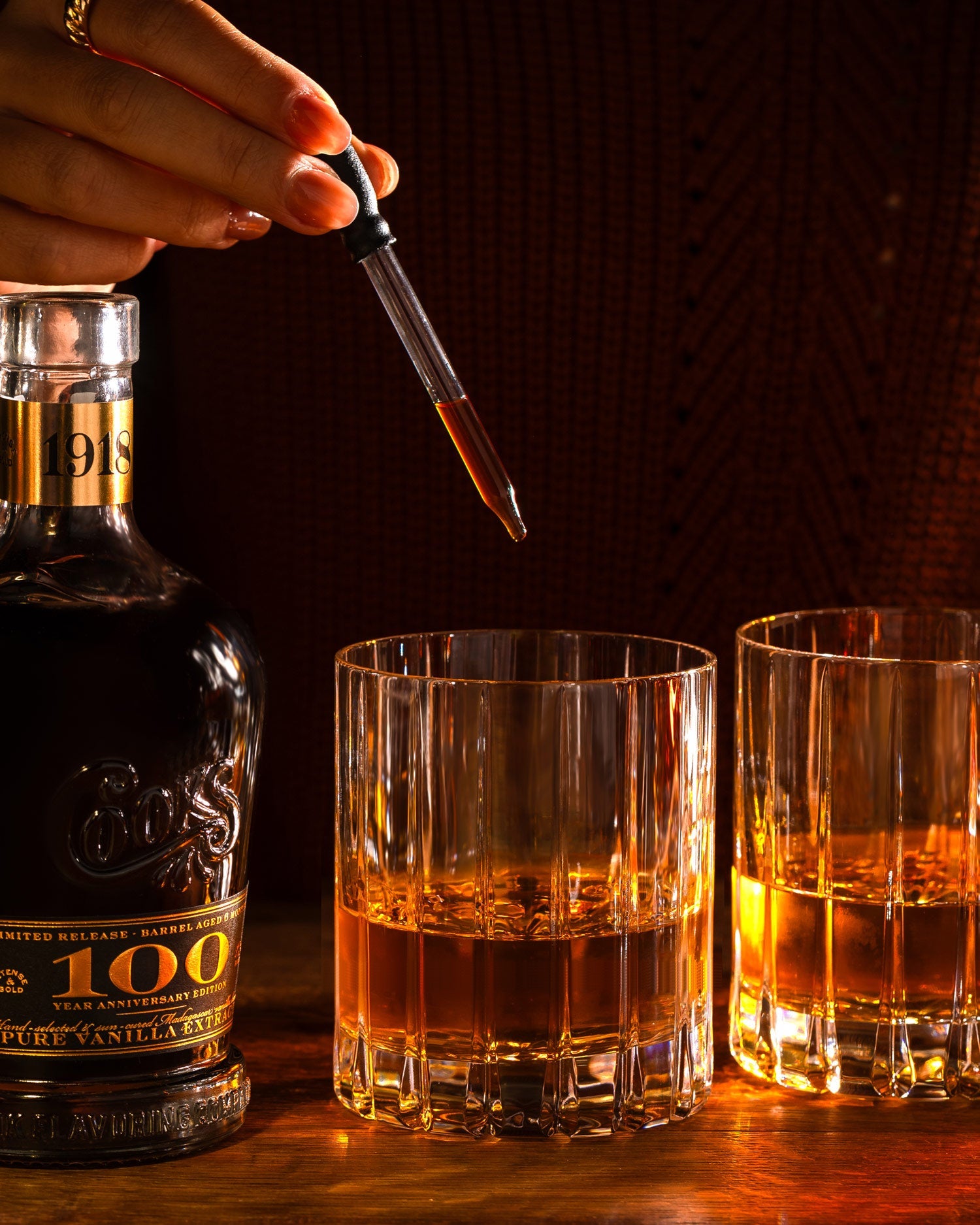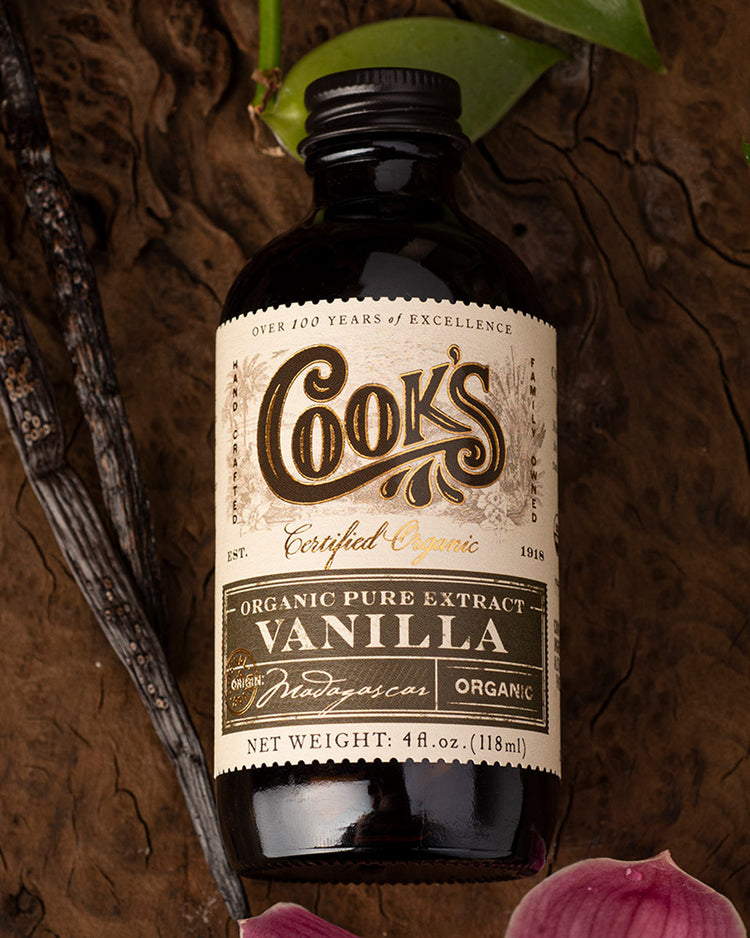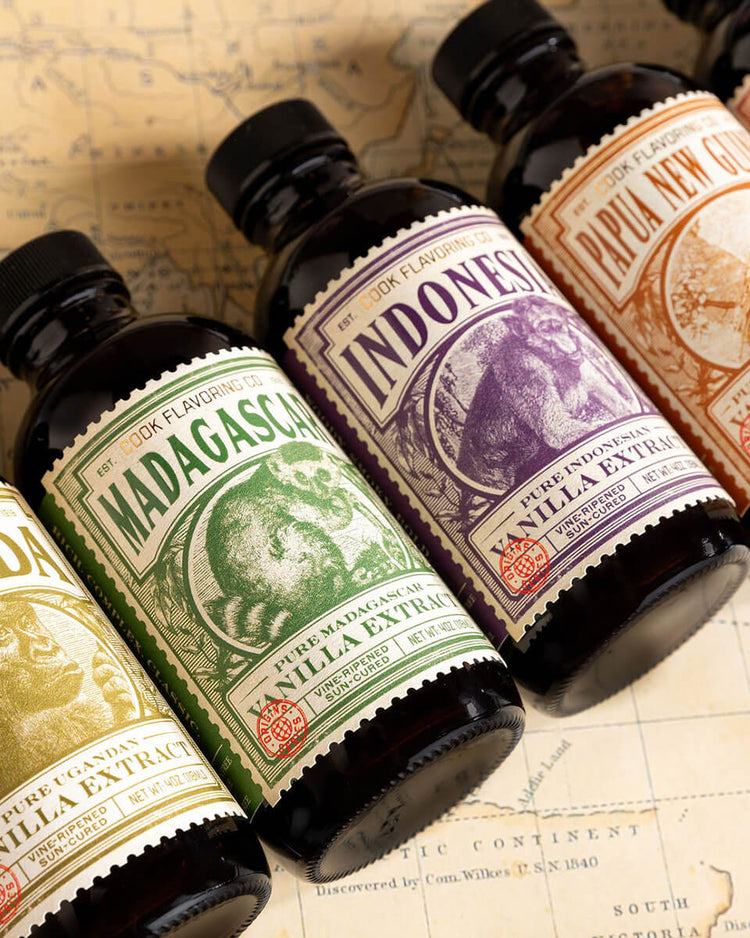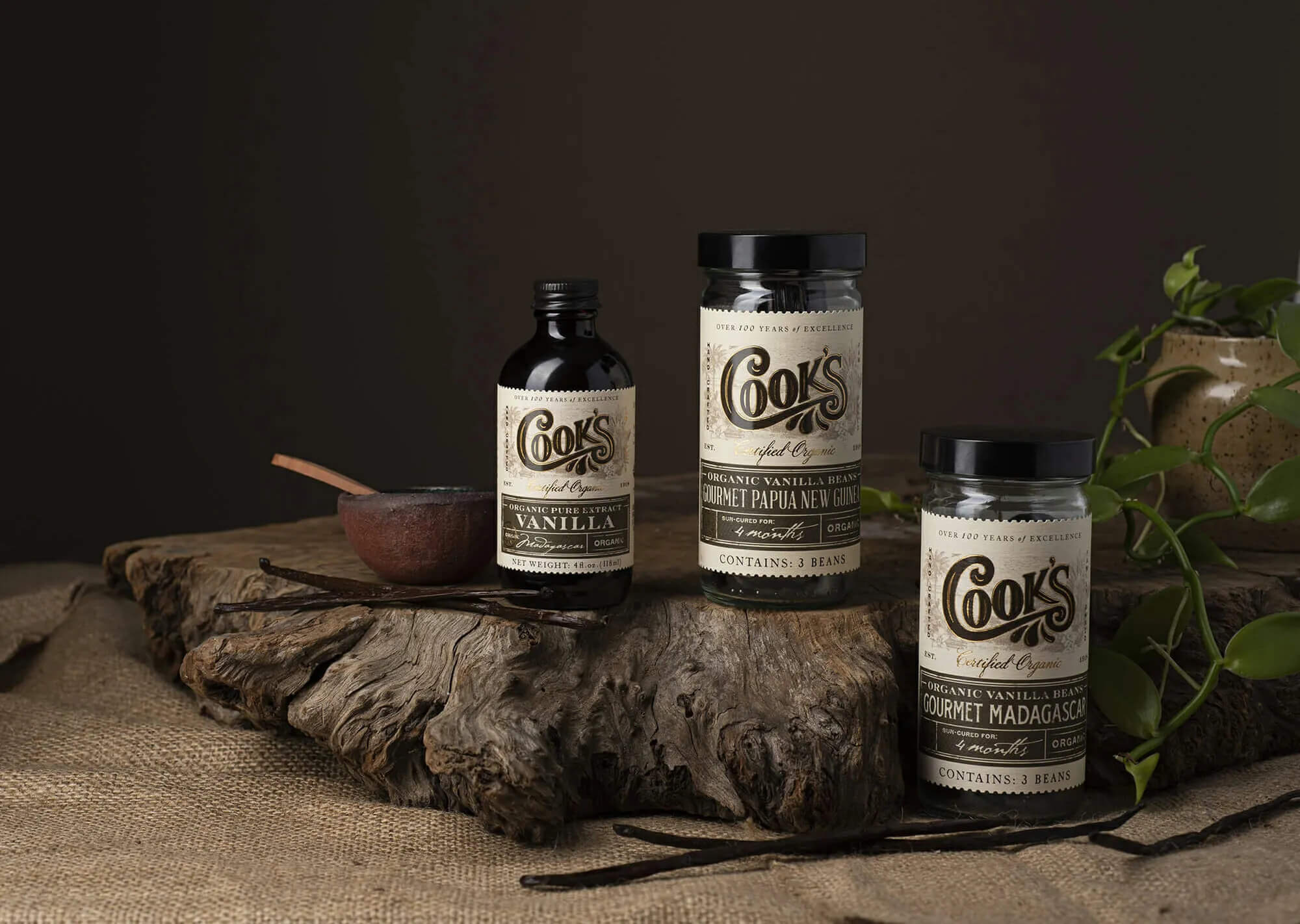Have a question about how to use flavorings? Ask Don.
That’s what we do. Donald Schmidt is Cook Flavoring Co.’s production chief. He pretty much IS our production. Don has been making our vanillas and other flavorings since 1987. He earned his master’s degree in Dairy Sciences from California Polytechnic State University. His wife, Josephine Lochhead Schmidt, is Cook’s president. Even Josephine can be heard in the office saying, “Ask Don.”
Whether you're making batches by the quart or 1,000 gallons, Don can help.
Don gets lots of questions from customers large and small, but here are some of the most common.
Usage recommendations
Don recommends using 1% to 2% -- by weight -- of pure single-strength vanilla for ice cream mixes or cake and cookie batters.
So for one gallon of ice cream mix, add one ounce of pure vanilla single-fold extract to start.
For ice cream and gelato, the yield will be around 1.5 gallons due to the air in the final product.
For baked goods, start with 1 ounce of pure single-fold vanilla extract to a 10 pound batch of batter.
For more intense flavor, try a 2% by-weight formula, which also produces an excellent flavor profile.
No matter the product, we always recommend testing your formula in small batches first to avoid costly errors.
The 1% to 2% guideline is a good starting point for other flavors too.
What is the Standard of Identity for pure vanilla extract?
By law, single-strength (known in the industry as single-fold) pure vanilla extract must contain 13.35 ounces of vanilla beans per gallon of extract and at least 35% alcohol.
Vanilla is the only food flavoring to have such a standard. The law dates to the 1960s and was created to prevent adulteration.
At Cook’s, our premium Cook’s Choice pure vanilla extract contains more than the legally required proportion of vanilla beans to alcohol. That’s one reason why it’s a superior vanilla. (The other reason is superior vanilla beans.)
What is two-fold, three-fold and four-fold extract?
We also produce concentrated pure vanillas. These come in double, triple, and quadruple strengths. In the industry we call these two-fold, three-fold and four-fold extracts. Concentrated vanillas can be more economical for customers because concentration reduces liquid volume and hence shipping costs.
And remember that our premium Cook’s Choice pure vanilla extract exceeds the minimum strength requirement of federal law.
Two-fold vanilla contains twice the weight of vanilla beans per gallon of extract as single-fold: 26.70 ounces. Use exactly half the amount that you would for a single-fold extract.
Triple fold and quadruple fold extracts follow the same pattern, but because alcohol has a saturation point -- a given amount of alcohol can only extract or “hold” a certain amount of flavoring components -- triple and quadruple vanilla extracts are made by condensing double-fold extracts. This reduces the amount of solvent post-extraction. The higher the concentration, the more condensed the extract is.
This standard of identity exists only for pure vanilla extracts. Strengths and ingredients in other vanillas -- whether natural, or artificial -- vary across the flavoring industry.
And remember that our premium Cook’s Choice pure vanilla extract exceeds the minimum strength requirement of federal law.
Food coloring and its effect on flavorings
None of Cook Flavoring Company’s pure extracts contain food coloring.
For our wholesale customers, we do make a handful of artificial flavors such as bubblegum and creme de menthe that do contain food coloring. The food coloring does not, in any way, change the strength of the flavoring. It merely ensures that the end product -- such as bubblegum or mint ice cream -- conforms to traditional notions of what those flavors should look like, be it blue, pink or green.
In response to customer requests, we have reduced the number of artificial ingredients in these products. In some cases, that has meant eliminating some food colorings. After the changes, some customers said they perceived that these flavors were weaker. Rest assured the flavor profile remains exactly the same. Customers are free to add color to their final products based on their own aesthetic and labeling needs.
All our food coloring agents conform to FDA standards.
Caramel color
This is one of the food industry’s most common coloring agents, often found in colas. Caramel color is a natural food coloring agent made by charring sugar. Like all processes that produce char, caramel coloring contains trace amounts of a possible carcinogen, 4-methylimidazole(4-MEI) -- the same component found in coffee.
Cook Flavoring Company manufactures in California, so our use of caramel coloring meets the uniquely strict rules of Proposition 65. All our uses of caramel color are determined safe under this state law.
Don makes each one and knows exactly how they work and where they are best applied.
Ask Don
So go ahead, Ask Don if you have any flavor puzzles in your food business. We pride ourselves in providing direct help for all our customers, whatever your size.
We offer dozens of pure flavorings to meet all your needs. Each one is a proprietary formula made from the finest ingredients, ranging from citrus and berry flavors to chocolates and coffees. And everything in between.
Don makes each one and knows exactly how they work and where they are best applied. He’s got ideas for flavorings that you might not have considered. As one example, we’ve got a terrific flavor that combines pure vanilla and citrus. It adds magic to baked goods.
If you have questions about specific flavors, including artificial flavors, that are not listed on our website, please, Ask Don.








Comments